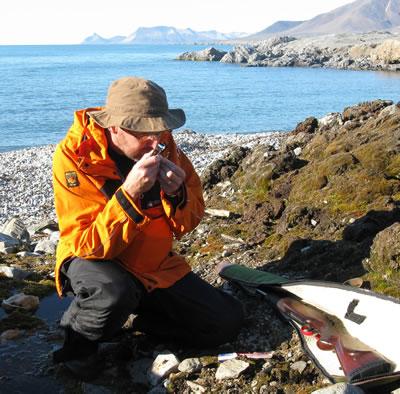Members Login

Channels
Special Offers & Promotions
The British Antarctic Survey chooses Meiji microscopes for field missions
 Meiji Techno UK, one of the UK's leading suppliers of light microscopes and accessories, is pleased to announce that the British Antarctic Survey chose Meiji microscopes for their recent research expedition to Spitsbergen.
Meiji Techno UK, one of the UK's leading suppliers of light microscopes and accessories, is pleased to announce that the British Antarctic Survey chose Meiji microscopes for their recent research expedition to Spitsbergen.
The British Antarctic Survey also works in the Arctic at the Natural Environment Research Council's Research Station situated at Ny-Ålesund (78°55' N, 11°56' E), on the high Arctic island of Spitsbergen, part of the Svalbard archipelago. The station, which supports mainly Earth and life scientists, is part of an international research community including stations owned by Norway, Germany, Japan, Italy, France and the UK. Reputedly the world's northern most community of up to 150 people, it has a unique atmosphere kindled by scientists of various disciplines and nationalities living, working and cooperating in a beautiful, though sometimes harsh, environment.
In August this year, BAS researcher Dr Kevin Newsham took his research program to Ny-Ålesund on Spitsbergen to find out whether or not leafy liverworts - a type of lower plant similar to mosses - are colonised by symbiotic fungi. His previous work in the Antarctic has shown that several species of leafy liverworts are colonised by the same fungi that grow into the roots of higher plants and improve their growth, often by enhancing the uptake of nitrogen from soil. However the occurrence of these fungi in Arctic ecosystems has not been documented, and the first step to determining their presence was to visit Kongsfjorden (Kings Bay) in West Spitsbergen to sample leafy liverworts. The liverworts were sampled from several locations in Kings Bay and identified in the field by the use of a x20 magnification hand lens.
Dr Newsham specifically chose to use the Meiji EMZ-5TR zoom stereo binocular dissecting microscope with a powerful Meiji FT191 dual arm fibre optic illuminator as the external light source to identify the liverworts. This equipment was chosen because of its rugged and ergonomic design, and its excellent value for money. The microscope and light source are situated in the laboratory of Harland House, the NERC's station. The higher magnification (up to x 200) provided by the dissecting microscope was necessary in order to visualise features that characterise specific genera of leafy liverworts. Ten genera were identified, including Cephaloziella, Lophozia and Barbilophozia - which also occur in the Antarctic - and others, including Tritomaria, Odontoschisma and Aneura.
The leafy liverworts were transported to the UK, either dried or as fresh material, where they are to be stained and examined by epifluorescence microscopy for the presence of fungal structures in their tissues. Further analyses, based on extracting DNA from liverwort tissues, the PCR amplification of fungal DNA and subsequent identification of the fungi present in the plants by analysis of DNA sequences, will take place in spring 2011.
To learn more about the products and services in light microscopy, visit Meiji's web site at www.meijitechno.co.uk.
Media Partners


